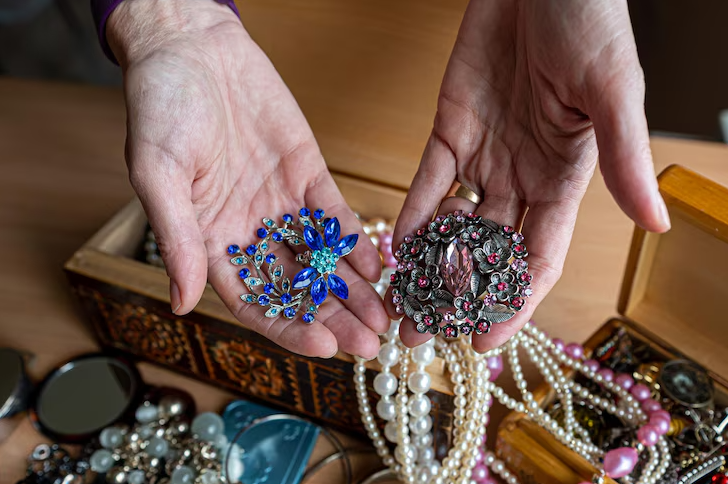Antique jewellery isn’t merely a collection of beautiful adornments—it’s a testament to history, craftsmanship, and, often, personal stories passed down through generations. Whether you’ve recently inherited a cherished piece or are building a collection, understanding its value is essential. An antique jewellery valuation tells you what your piece is worth and provides insights into its history and uniqueness. But where should you start?
What Exactly Is Antique Jewellery?
Antique jewellery refers to pieces that are over 100 years old. These items often feature intricate designs, rare gemstones, and impeccable craftsmanship that reflect the era in which they were made. Each piece carries artistic and historical significance, from Edwardian elegance to Victorian detailing. Because of these unique qualities, ownership often goes beyond monetary value—it’s about preserving a piece of history.
Why Is Jewellery Valuation Important?
Do you know the true worth of your antique jewellery? Many don’t. Here’s why getting it valuated matters:
- Understanding Financial Value: Antique jewellery could be worth significantly more than you think due to precious materials, rarity, and desirability.
- Insurance Coverage: Protecting these pieces requires accurate valuation for adequate insurance. You’ll need this documentation if they’re lost, stolen, or damaged.
- Estate Planning and Selling: An official valuation ensures fairness and clarity, whether passing items to heirs or selling them.
- Preserving Historical Insight: A valuation often involves detailed assessments that uncover the jewellery’s age, origin, and cultural significance.
Without proper valuation, you risk underestimating its financial and historical value. Would you want such treasures overlooked?
Factors That Impact Antique Jewellery Valuation
Not all antique jewellery valuations is created equal, and several factors influence its value. Here are the most critical ones to consider:
- Age and Rarity
The older and rarer a piece is, the higher its potential value. Rare designs, limited production models, or jewellery made by famous designers often attract premium prices. - Materials and Gemstones
The quality of metals (gold, silver, platinum) and gemstones significantly affects a piece’s worth. Unique gems like old mine-cut diamonds or natural pearls can increase a piece’s value substantially. - Craftsmanship
The intricacy and quality of the craftsmanship play a vital role. Handmade antique jewellery showcasing detailed work is often valued more than mass-produced items. - Condition
Is the piece in pristine condition, or does it require restoration? Intact jewellery with minimal wear is far more valuable than extensively repaired items. - Provenance
Jewellery linked to significant historical events or personalities holds greater appeal. Documentation or evidence verifying its origins can drastically influence valuation. - Market Trends
Current demand for specific styles or materials plays a role. For instance, Art Deco jewellery is highly sought after, which can raise its price.
How to Find a Reputable Valuer
Finding the right professional to assess your jewellery is crucial. Here’s how you can ensure you’re working with an expert:
- Check Credentials
- Seek valuers accredited by recognized institutions such as the Gemological Institute of America (GIA) or The National Association of Jewellers (NAJ).
- Specialization in Antiques
- Not all valuers are specialists. Ensure they have specific expertise in antique jewellery to receive accurate results.
- Ask for Recommendations
- Word of mouth can be powerful. Ask collectors, antique dealers, or friends for referrals to trustworthy professionals.
- Review Their Process
- A credible valuer should follow a standardized, transparent process. They should provide a written report outlining all valuation details for clarity and future reference.
Tips to Maintain the Value of Your Antique Jewellery
Once you’ve uncovered the worth of your jewellery, preserving its value is equally important. Maintenance ensures your pieces remain in top condition for years to come. Follow these tips for proper care:
- Handle With Care
Always hold your jewellery gently, avoiding unnecessary tugging or dropping. - Store Properly
Keep items separated in soft-lined boxes to prevent scratches. Avoid direct sunlight, which can cause gemstones to fade over time. - Clean Cautiously
- Rely on professional cleaning or use mild, non-abrasive cleaning solutions suitable for antique pieces. Refrain from using harsh chemicals or excessive brushing that could harm delicate components.
- Schedule Regular Inspections
Have your jewellery inspected routinely to ensure settings are secure and in good repair. - Avoid Everyday Wear
Save antique jewellery for special occasions rather than exposing it to potential wear and tear daily.
Preserve History, Unlock Value
Antique jewellery holds stories, beauty, and often significant value. By investing in professional valuation and prioritizing maintenance, you ensure these treasures remain appreciated—not just for their monetary worth but also for their cultural and emotional importance.
Are you ready to uncover the hidden value of your antique jewellery? Connect with a trusted valuer today and take the first step toward preserving your collection’s legacy.
